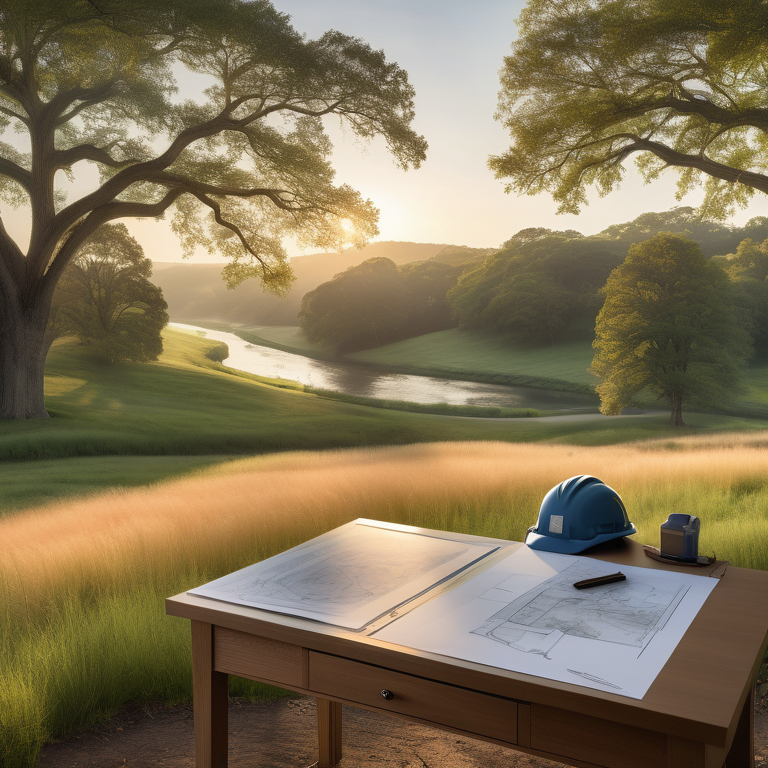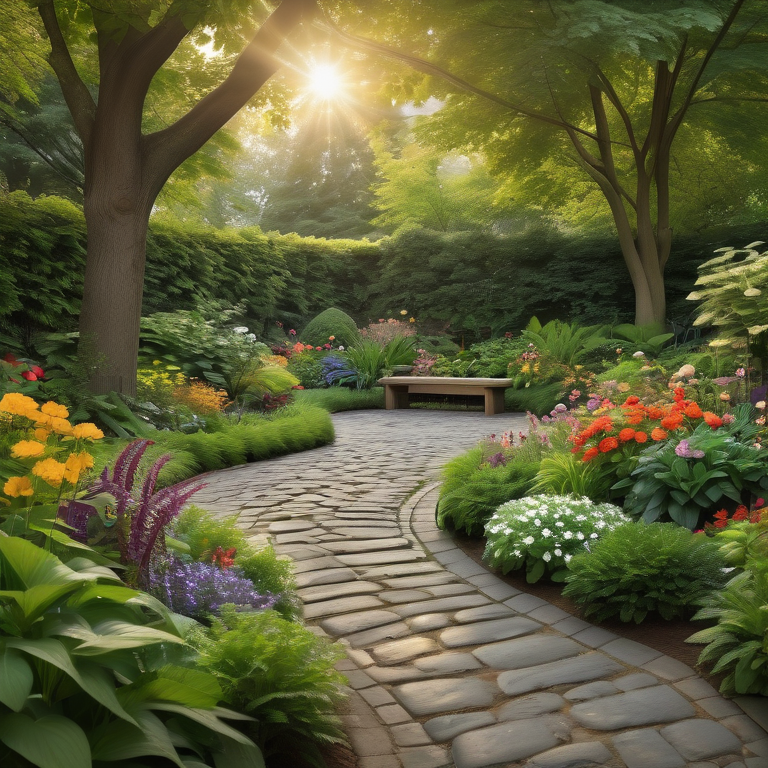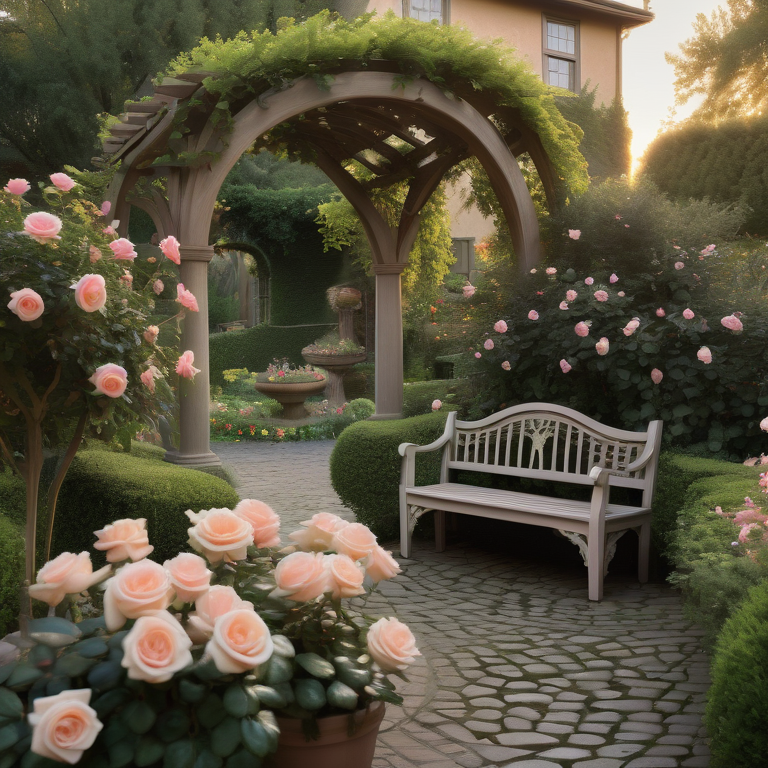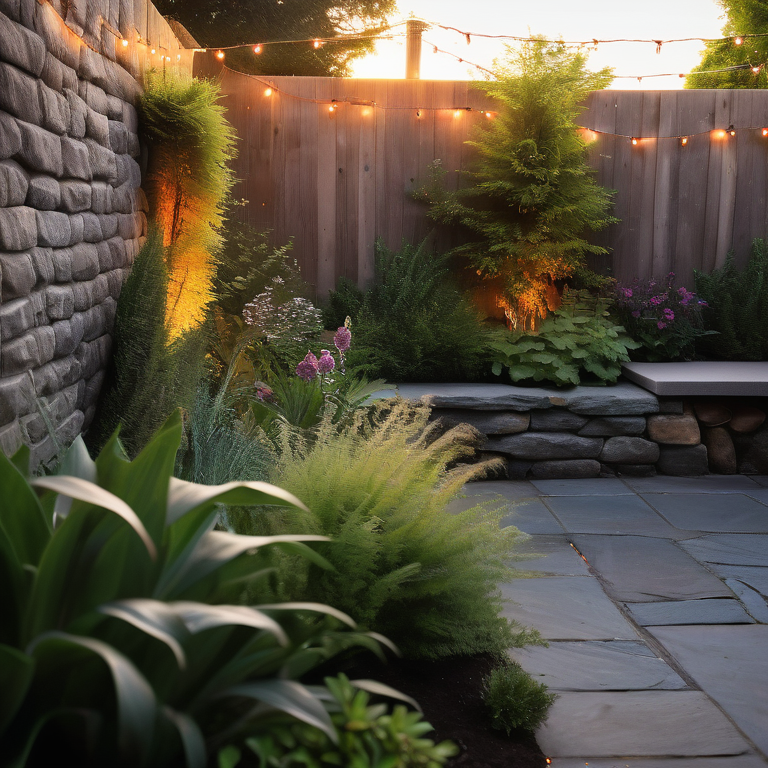What is landscape architecture and why is it important?
Landscape architecture involves the design, planning, and management of outdoor spaces to achieve environmental, social, and aesthetic outcomes. It is crucial as it enhances the quality of life by creating sustainable and functional environments that promote well-being, biodiversity, and community engagement.
What is landscape architecture and why is it important?
Key Highlights
- Landscape architecture combines design, nature, and the outdoors to create a more sustainable future.
- Landscape architects work on a wide range of projects, from city parks to rooftop gardens, transforming urban and rural land.
- UCD is the only university in Ireland that offers an undergraduate degree in Landscape Architecture.
- The curriculum covers ecological and environmental sciences, human sciences, technology and culture, and professional and managerial skills.
- Graduates of UCD Landscape Architecture have diverse career opportunities and can become professional landscape architects.
- The program also offers international study opportunities through the European Landscape Education Exchange program.
Introduction
Landscape architecture is an exciting field that combines design, nature, and the outdoors to create better, more sustainable environments. If you have a passion for design, love the outdoors, and are interested in making a positive impact on the world, then landscape architecture might be the perfect career path for you. This blog will provide you with a comprehensive overview of landscape architecture, including its key concepts, history, role in urban planning, educational pathways, professional practices, and more. As we celebrate Landscape Architecture Month in April, we will also be featuring various profiles and articles to further explore the world of landscape architecture.
Understanding Landscape Architecture
Landscape architecture is the profession that involves the planning, design, and management of external spaces. It combines elements of design, urbanism, environmental science, and sociology to create spaces that are not only aesthetically pleasing but also functional and sustainable. Landscape architects work on a wide range of projects, from small residential gardens to large-scale urban developments. They collaborate with architects, engineers, ecologists, and planners to shape the places we live, work, and play in. Understanding landscape architecture is crucial to creating and maintaining environments that meet the needs of society.
Key Concepts and Definitions
In landscape architecture, several key concepts and definitions are important to understand. Site design refers to the process of planning and designing a specific location, taking into account its unique characteristics, such as topography, vegetation, and existing infrastructure. Land use refers to the purpose or activities for which a particular piece of land is used. Natural processes, on the other hand, are the ecological processes that occur in the natural environment, such as water cycling, soil formation, and plant growth. Understanding these concepts is essential for landscape architects to create designs that are harmonious with the natural environment and meet the needs of the users. www.wicklowlandscaping.ie
The Evolution and History of Landscape Architecture
The field of landscape architecture has evolved over centuries, with influences from various cultures and design movements. Its historical development can be traced back to ancient civilizations, where gardens were designed as symbols of power and beauty. In the Renaissance period, garden design became more refined and focused on principles such as symmetry and perspective. The creation of public parks in the 19th century marked a shift towards designing open spaces for the general public. Today, landscape architects continue to draw inspiration from the past while incorporating innovative design approaches to create sustainable and functional landscapes. www.wicklowlandscaping.ie
The Role of Landscape Architecture in Urban Planning
Landscape architecture plays a crucial role in urban planning by integrating natural and built environments to create sustainable and livable cities. Urban planning is the process of designing and shaping the physical layout of cities, including the arrangement of buildings, infrastructure, and public spaces. Landscape architects contribute to urban planning by designing green spaces, such as parks and gardens, that enhance environmental sustainability and improve the quality of life for urban dwellers. Regional parks, which are large-scale natural areas designed for recreational and conservation purposes, are also a significant part of landscape architecture in urban planning.
Integration with Urban Development
Landscape architecture integrates with urban development by creating a wide range of spaces that contribute to the overall design and functionality of cities. Urban design is the process of shaping the physical layout and character of urban areas, including streetscapes, plazas, and public spaces. Landscape architects play a crucial role in designing these spaces to create better places for people to live, work, and play. They consider factors such as accessibility, aesthetics, sustainability, and social interaction to ensure that urban spaces are functional, visually appealing, and promote a sense of community. www.wicklowlandscaping.ie
Enhancing Environmental Sustainability
Environmental sustainability is a key focus of landscape architecture. With increasing concerns about climate change and the depletion of natural resources, landscape architects play a vital role in designing landscapes that are environmentally friendly and promote ecological balance. They conduct environmental assessments to evaluate the potential impacts of their designs on the natural environment and incorporate strategies for climate adaptation and resource management. By utilizing green infrastructure, such as rain gardens and green roofs, landscape architects enhance environmentalism and natural processes, such as water filtration and biodiversity, to create more sustainable and resilient landscapes.
Fields of Landscape Architecture
Landscape architecture encompasses various fields and types of projects. Residential design involves creating outdoor spaces for private homes, including gardens, courtyards, and outdoor living areas. Commercial projects, on the other hand, focus on designing outdoor spaces for businesses, such as office complexes, shopping centers, and hotels. Public space design involves creating outdoor areas that are accessible to the general public, such as parks, playgrounds, plazas, and waterfronts. Each field presents unique challenges and opportunities for landscape architects to create functional and aesthetically pleasing outdoor environments. www.wicklowlandscaping.ie
Residential, Commercial, and Public Spaces
In the field of landscape architecture, professionals work on a wide range of projects, including residential, commercial, and public spaces. In residential design, landscape architects collaborate with homeowners to create outdoor environments that reflect their preferences and enhance the overall functionality of the property. Commercial projects involve designing outdoor spaces for businesses that are not only visually appealing but also meet the specific needs of the clients and users. Public space design focuses on creating outdoor areas that promote social interaction, community engagement, and cultural significance. Landscape architecture education provides aspiring professionals with the knowledge and skills necessary to excel in these fields and contribute to the development of sustainable and engaging outdoor spaces.
Restoration and Conservation Projects
Landscape architects also play a crucial role in restoration and conservation projects, particularly in the preservation of national parks and other recreation areas. The Landscape Institute, a professional body for landscape architects, emphasizes the importance of preserving and enhancing the natural and cultural heritage of landscapes, including those found in national parks. Conservation projects involve the protection and management of natural resources, biodiversity, and ecosystems within these parks. Restoration projects focus on revitalizing degraded or damaged landscapes to their original or historic condition, ensuring that these national parks remain beautiful and sustainable for future generations. By applying their knowledge of ecological processes, landscape architects can design and implement strategies that help restore and conserve natural landscapes, ensuring their long-term sustainability and providing habitats for various species. www.wicklowlandscaping.ie
Educational Pathways in Landscape Architecture
To pursue a career in landscape architecture, individuals can choose from various educational pathways. Higher education institutions, such as UCD, offer undergraduate degree programs in Landscape Architecture that provide comprehensive training in design, ecology, environmental science, and planning. These programs typically span four years and include a combination of studio projects, lectures, field trips, and internships. A strong foundation in design principles, environmental sciences, and social sciences is essential for aspiring landscape architects to develop the necessary skills and knowledge to succeed in this profession. Additionally, students have the opportunity to gain hands-on experience through internships with top firms such as AECOM, Austen Associates, Bernard Seymour Landscape Architects, Murray & Associates, South Dublin County Council, and Summerhill Landscapes (New York).
Degree Programs and Specializations
Degree programs in landscape architecture offer students the opportunity to specialize in various areas of the field. Bachelor’s degrees provide a comprehensive education in landscape architecture, covering topics such as design principles, site analysis, plant selection, and construction techniques. Some programs also offer honors degrees, which provide additional in-depth study and research opportunities for motivated students. Specializations within the field of landscape architecture may include urban design, sustainable design, historic preservation, or landscape planning. These specializations allow students to focus their studies and gain expertise in specific areas of interest, preparing them for specialized career paths within the profession. www.wicklowlandscaping.ie
Essential Skills for Aspiring Landscape Architects
Aspiring landscape architects should possess a variety of skills to succeed in the field. A strong design sense and creativity are essential for developing aesthetically pleasing and functional outdoor spaces. Knowledge of ecological processes and environmental science enables landscape architects to design landscapes that are sustainable and promote biodiversity. Excellent communication and interpersonal skills are crucial for collaborating with clients, stakeholders, and multidisciplinary teams. Professional experience, gained through internships or work experience, provides aspiring landscape architects with practical skills and real-world project exposure. These experiences allow them to develop their skillset further and gain a deeper understanding of the profession.
Professional Landscape Architecture Practices
Professional landscape architects play a vital role in shaping the built environment and creating sustainable outdoor spaces. They work with clients, stakeholders, and multidisciplinary teams to design and implement landscape projects. Professional landscape architects often hold memberships in professional organizations, such as the International Federation of Landscape Architects (IFLA), which promotes the profession and sets standards for professional practice. These organizations provide resources, networking opportunities, and continuing education for landscape architects, ensuring that they stay up-to-date with the latest trends and innovations in the field and lead to full professional membership of the IFLA. www.wicklowlandscaping.ie
Notable Landscape Architects and Their Contributions
The field of landscape architecture has been shaped by numerous notable figures who have made significant contributions to the profession. Landscape architects such as Frederick Law Olmsted, who designed Central Park in New York City, and Roberto Burle Marx, known for his modernist approach to landscape design, have left a lasting impact on the field. Their innovative designs and advocacy for the importance of outdoor spaces have influenced the way landscape architects approach their work. By studying the work of these notable figures, aspiring landscape architects can gain inspiration and learn from their contributions to the profession.
www.wicklowlandscaping.ie: A Premier Service Provider
Wicklow Landscaping is a premier service provider in Ireland, offering professional landscape architecture services. As a member of the Irish Landscape Institute (ILI), Wicklow Landscaping adheres to the highest standards of professional practice in landscape architecture. They specialize in creating innovative and sustainable outdoor spaces for residential, commercial, and public clients. With a team of experienced landscape architects, designers, and horticulturists, Wicklow Landscaping delivers exceptional projects that enhance the natural beauty and functionality of outdoor environments. Their expertise in landscape design, construction, and maintenance ensures that clients receive personalized and high-quality service. For more information on their services in the Dublin area, please refer to the following table:
|
Column Name A |
Column Name B |
|
Service Provider |
Wicklow Landscaping |
|
Membership |
Irish Landscape Institute (ILI) |
|
Specialization |
Landscape Architecture |
|
Services Provided |
Design, Construction, Maintenance |
|
Client Focus |
Residential, Commercial, Public |
|
Expertise |
Landscape Design, Horticulture |
Landscape Architecture and Indigenous Practices
Landscape architecture also embraces indigenous knowledge and traditional practices to create culturally significant landscapes. Indigenous communities have a deep understanding of the land and its natural processes, which forms the basis of their cultural landscapes. By incorporating indigenous knowledge into landscape designs, landscape architects can create spaces that reflect the cultural identity and values of indigenous communities. Traditional practices, such as storytelling, art, and rituals, play a crucial role in shaping these landscapes, ensuring their preservation and cultural significance. www.wicklowlandscaping.ie
Incorporating Traditional Knowledge
Incorporating traditional knowledge into landscape architecture involves recognizing and valuing the wisdom and expertise of indigenous communities in relation to the land. Indigenous practices, such as sustainable land management techniques and traditional ecological knowledge, provide valuable insights into creating landscapes that are both culturally significant and environmentally sustainable. By working closely with indigenous communities, landscape architects can ensure that their designs reflect and respect traditional values, practices, and cultural significance. This approach promotes cultural diversity, environmental stewardship, and social equity in landscape architecture projects.
Case Studies of Cultural Significance
Several case studies exemplify the incorporation of indigenous knowledge and traditional practices into landscape architecture. For example, the Four Corners Monument in the United States is a cultural landscape that celebrates the Navajo, Hopi, Ute, and Zuni tribes. The design of the monument incorporates indigenous methods of storytelling, art, and traditional architecture, creating a space that honors the cultural heritage of these tribes. Another example is the Ngambri Cultural Healing Centre in Australia, which incorporates indigenous knowledge of healing plants, spiritual practices, and land management techniques. These case studies demonstrate the potential of landscape architecture to create culturally significant spaces that celebrate indigenous communities and promote cultural understanding. www.wicklowlandscaping.ie
Key Takeaways on Landscape Architecture
Landscape architecture is a multidisciplinary field that combines design, environmental science, and social science to create sustainable and aesthetically pleasing outdoor spaces. Landscape architects play a crucial role in urban planning, creating better places for people to live, work, and play. They incorporate ecological principles and cultural significance into their designs, ensuring a harmonious relationship between humans and the natural environment. Landscape architecture education provides aspiring professionals with the necessary skills and knowledge to succeed in this rewarding profession. By understanding the key concepts and trends in landscape architecture, individuals can appreciate the impact of this field on the built environment and society. Learn more about the basics of landscape architecture and its key takeaways by downloading our PDF guide.
Current State of Knowledge
The field of landscape architecture is constantly evolving, with new trends and technologies shaping the current state of knowledge. Sustainable design practices, such as green infrastructure and climate-responsive design, are becoming increasingly important in landscape architecture projects. Advances in technology, such as Geographic Information Systems (GIS) and digital modeling tools, have revolutionized the way landscape architects plan and visualize their designs. Professional practice in landscape architecture is also evolving, with a greater emphasis on multidisciplinary collaboration, community engagement, and environmental stewardship. Staying updated with the latest trends and advancements is essential for landscape architects to deliver innovative and impactful designs. www.wicklowlandscaping.ie
Unanswered Questions and Future Directions
As with any field, there are unanswered questions and areas for future research in landscape architecture. One area of exploration is the integration of technology, such as artificial intelligence and virtual reality, into the design process. Research on the long-term impacts of landscape architecture projects on ecology, biodiversity, and human well-being is also essential. Additionally, landscape architects can explore new directions in community engagement, social equity, and cultural preservation within their designs. By addressing these unanswered questions and exploring new directions, landscape architects can continue to innovate and contribute to the sustainable development of our built environment. www.wicklowlandscaping.ie
Conclusion
In essence, landscape architecture is a blend of art, science, and sustainability, shaping our surroundings for the better. It involves integrating nature with human-made environments to create harmonious and functional spaces. By delving into its history, significance in urban planning, diverse applications, educational pathways, and indigenous practices, we uncover a realm that balances aesthetics with environmental consciousness. Notable landscape architects and their contributions inspire us to appreciate the transformative power of design. As we navigate through unresolved queries and future prospects, landscape architecture emerges as a dynamic field continually evolving to meet societal needs while preserving our natural heritage. www.wicklowlandscaping.ie
Frequently Asked Questions
What is the Difference Between Landscape Architecture and Gardening?
Landscape architecture and gardening are related fields but have distinct differences. Landscape architecture focuses on the planning and design of outdoor spaces on a larger scale, considering factors such as aesthetics, functionality, and sustainability. Gardening, on the other hand, is more focused on the cultivation and maintenance of plants within a smaller area. Landscape architects use design principles, horticulture knowledge, and an understanding of the overall aesthetics to create outdoor spaces, while gardening typically involves plant selection, planting, and ongoing maintenance.
How Does Landscape Architecture Contribute to Environmental Sustainability?
Landscape architecture contributes to environmental sustainability by designing landscapes that promote ecological balance and mitigate the impacts of climate change. Landscape architects incorporate green infrastructure, such as rain gardens and green roofs, to manage stormwater and reduce the strain on urban drainage systems. They also consider climate adaptation strategies and resource management techniques to create landscapes that are resilient to future environmental challenges. By integrating sustainable design principles and practices, landscape architecture plays a vital role in creating a more sustainable and environmentally conscious built environment.
Can Landscape Architecture Improve Urban Living?
Landscape architecture has the potential to significantly improve urban living by enhancing the quality of life in cities. Well-designed outdoor spaces, such as parks and green corridors, provide opportunities for physical activity, recreation, and relaxation, thereby improving public health and well-being. Green spaces also promote community engagement, social interaction, and a sense of belonging, creating a more cohesive and vibrant urban environment. By incorporating nature into urban spaces and prioritizing the needs and preferences of the community, landscape architecture can contribute to creating more livable and enjoyable cities.










